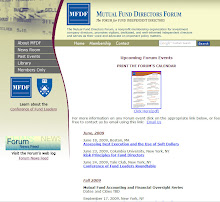President-Elect Obama announced that he plans to nominate Mary Schapiro, currently Chief Executive Officer of FINRA (which is the successor organization to the NASD), to be Chairman of the SEC. Following his inauguration next month, President-Elect Obama will submit her name to the Senate, which must vote to confirm her appointment to the five-member SEC. Following that confirmation, the President has the power to appoint her as Chairman.
The announcement came well before the time at which other incoming administrations have turned to selecting an SEC Chairman. In the past the agency has operated under an “Acting Chairman” well after an inauguration, with many Chairmen having being appointed in the summer following an inauguration. Clearly, recent events have given the issue of who is to lead the SEC greater prominence.
One reason Mary Schapiro may have been President-Elect Obama's early choice for leading the SEC is that her previous positions give her much needed experience in addressing the challenges ahead for the agency. She previously served as a Commissioner of the SEC, being appointed in 1988 by President Reagan, reappointed by President Bush in 1989 and named Acting Chairman by President Clinton in 1993. Schapiro then headed the Commodity Futures Trading Commission, which is responsible for regulating the US futures markets, including financial, agricultural and energy markets. Lately, there has been considerable discussion about whether to merge many of the oversight responsibilities of the CFTC with the SEC. Her experience at both regulatory entities may give her a unique perspective on how to successfully merge regulatory functions in a manner that will strengthen our markets and restore investors' confidence.
Schapiro will come in to the Chairmanship of the SEC with a long and deep understanding of the financial markets and investment advisory firms. She was a strong and early proponent of the “summary prospectus,” arguing that lengthy disclosures impede investors’ ability to understand products, and that forcing firms to print and mail disclosures few investors want or read is a waste of resources.





